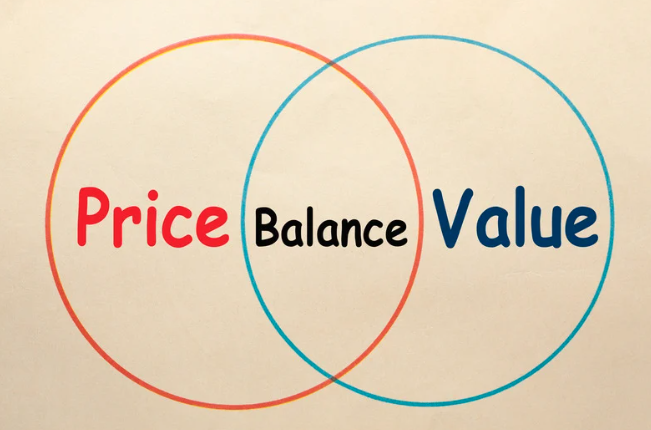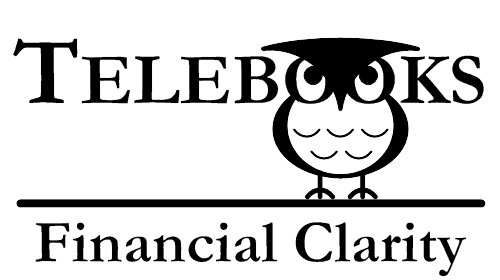Are you confident that your architecture firm is billing for all the time your team spends on client work? If you’re like many firm owners, the answer is probably no. Time tracking for architects is often viewed as a tedious task, but when ignored, it can lead to underbilling, missed deadlines, and lower profitability.

Effective time tracking for architects is more than just logging hours. It’s about unlocking profitability, boosting efficiency, and making smarter business decisions. In this post, we’ll explore how tracking time directly impacts your firm’s bottom line and how it can be implemented effectively.
How Time Tracking Directly Impacts Profitability
Accurate time tracking allows architects to track budgets and bill appropriately for work done. Without time tracking, firms may unknowingly run over budget or leave money on the table. Missing even small amounts of billable time can add up to significant losses.

Billable utilization, which is the percentage of time spent on billable work, is crucial. For small firms, this metric directly impacts profitability. If your firm’s billable utilization is low, you’re not maximizing your potential income. Time tracking for architects ensures you capture every billable hour. And given a target billable utilization (e.g. 65%) that is clearly communicated with your team, your team has a tangible metric to strive towards.
The Hidden Benefits of Time Tracking for Architects

1. Improved Employee Accountability
When employees track their time, they become more aware of how they spend their workday. Time tracking encourages accountability. If someone spends an hour on a task, they’ll record that hour. This transparency helps keep projects on track and deadlines in focus.
It also allows you to identify inefficiencies. For example, if one team member consistently takes longer on tasks than others, you can investigate whether they need training or if the task can be streamlined.
2. Better Project Management
Time tracking directly ties into project management. By knowing exactly how long each task takes, you can set realistic deadlines and allocate resources effectively. It prevents projects from running over budget or past deadline because you have a clear view of what’s happening in real time.
For architects, time tracking provides the clarity you need to manage multiple projects at once. You’ll know where each project stands, how much time is left, and whether you need to adjust schedules.
3. Enhanced Invoicing and Cash Flow
Time tracking also simplifies invoicing, especially for hourly billing. When time is tracked accurately, you can generate detailed invoices that show clients exactly what work was completed and how long it took. This transparency builds client trust and ensures you get paid for all the work you’ve done.
Efficient invoicing leads to improved cash flow. For small architecture firms, cash flow is everything. With better cash flow, you can pay your bills, reinvest in your business, and grow more quickly.
An Alternative Viewpoint: Time Tracking vs. Value-Based Pricing
Ron Baker, a leading advocate of value-based pricing, argues that time tracking limits the focus on the true value delivered to clients. He believes that instead of billing based on hours worked, firms should focus on the outcome and the value their services bring to the client.

Baker suggests that tracking time creates an incentive to maximize hours rather than focus on what truly matters—the results you deliver.
While value-based pricing has its merits, especially for firms delivering highly creative or customized services, time tracking remains a critical tool for small architecture firms. It’s not just about tracking hours to bill; it’s about understanding how your team’s time is spent and how to improve efficiency.
A Hybrid Approach: Combining Time Tracking and Value-Based Pricing
For many small firms, time tracking and value-based pricing can coexist. Here’s why:
- Internal Insight: Time tracking helps you understand the internal costs of your projects. This data gives you a clear picture of how your resources are allocated, allowing you to manage multiple projects efficiently.
- Setting a Baseline: Even when using value-based pricing, having an understanding of your internal time costs ensures you’re not underpricing your services. Time tracking provides a baseline for the value you deliver.
- Improving Profitability: Firms can use value-based pricing with clients while still leveraging time tracking internally to optimize resource management, billable utilization, and project timelines.

By combining both approaches, your architecture firm can align with the value-driven mindset while maintaining the operational benefits of time tracking.
How to Implement a Time Tracking System in Your Architecture Firm
1. Choose the Right Tools
Selecting the right time-tracking tools is essential for your firm’s success. When evaluating software, look for solutions specifically designed for architects or that easily integrate with your existing project management and accounting systems. This way, your team can track time, generate reports, and sync billing automatically.
Here are a few options popular with small architecture firms:
- Harvest: A simple, user-friendly tool that integrates well with project management software and accounting tools like QuickBooks. It offers time tracking, invoicing, and expense tracking in one platform.
- Monograph: Built specifically for architects, Monograph offers a complete solution for tracking time, managing projects, and analyzing project budgets. It focuses on simplifying project and time management for architecture firms.
- BQE Core: Designed for professional service firms, BQE Core combines time tracking with project management, billing, and accounting features. Its robust reporting helps firms optimize productivity and profitability.
- BigTime: A comprehensive professional services automation tool designed for architects and engineers. It combines time tracking, project management, and invoicing, making it a powerful all-in-one solution.
Choosing the right tool depends on your firm’s specific needs, such as ease of use, integration capabilities, and reporting features.
2. Create a Time Tracking Culture
Getting your team to consistently track their time can be a challenge. To build a time-tracking culture, emphasize why it matters. Explain that time tracking helps the firm stay profitable, manage projects better, and grow. When publishing monthly financials, include a monthly staff utilization report, and share this report with your team.
Address common objections. For example, some employees may think time tracking takes too long. In reality, modern tools make it quick and easy. Encourage everyone to adopt the system by showing how it benefits both the firm and the individual.
3. Analyze and Use Time Tracking Data
Once your firm has implemented a time-tracking system, the next step is to leverage the data to drive smarter decisions. Time-tracking data offers more than just billable hours—it gives you insight into your firm’s operational efficiency.
Here’s how you can use the data to improve your processes:
- Evaluate Project Efficiency: Review the hours logged for each phase of a project. Are certain phases consistently taking longer than expected? If so, this could signal either inefficiencies in your workflow or the need to adjust your initial estimates. Over time, you’ll be able to fine-tune your project timelines and increase productivity.
- Assess Employee Performance: Use the data to understand how your team is performing. Are some employees consistently exceeding their estimated time on tasks? This could highlight the need for additional training or better task allocation. On the other hand, you may identify high performers who finish tasks faster, and you can use that data to reward or mentor others.
- Optimize Resource Allocation: Time tracking helps you allocate your firm’s resources more effectively. By understanding how much time each project requires, you can better balance your team’s workload and ensure that billable hours are maximized across projects.
- Improve Fee Estimates: The historical time data from past projects can be used to refine your estimates for future jobs. Rather than relying on guesswork, you’ll have a clear, data-backed understanding of how much time each phase of work typically takes. This ensures your pricing is both competitive and profitable.
By regularly analyzing this data, you can ensure that your architecture firm is operating efficiently and profitably. Instead of just tracking hours, you’ll be actively improving your business.
How to Implement a Value Pricing System in Your Architecture Firm
Transitioning to a value pricing system requires a shift in how you approach client relationships and project billing. Here’s how you can get started:
1. Define Your Value Proposition
To implement value pricing, first, identify what sets your firm apart. What unique value do you provide to your clients? This could be your design expertise, project efficiency, or creative vision. Your value proposition becomes the foundation for determining pricing.
2. Engage in Value-Based Conversations with Clients
Start the pricing discussion with clients by focusing on outcomes, not hours. Ask them about their goals and what success looks like. Use these insights to frame your services in terms of the value delivered. This builds trust and helps clients see why you’re charging based on outcomes rather than time.
3. Package Your Services Around Value
Instead of itemizing services by hours or tasks, package them based on the value they bring to the client. For example, instead of billing by the hour for design work, offer a package that includes design, project management, and oversight, all tied to the client’s desired outcomes.
4. Set Fixed Fees Based on Value
Once you’ve established the value you’re delivering, set a fixed fee that reflects that value. This fee should be based on the client’s expected return on investment or the overall impact of your services. With value pricing, clients pay for results, not the time spent delivering them.
5. Leverage Time Tracking Internally
Even though you’re using value pricing with clients, time tracking remains crucial for your internal operations. By tracking how much time you spend on each project, you can monitor project costs and ensure your fixed fees are profitable. This hybrid approach allows you to optimize resources while focusing on value for the client.
Real-World Example: Time Tracking in Action with Value-Based Pricing
Let’s bring this concept to life with a real-world example. The following example illustrates how a small architecture firm might leverage time tracking with value-based pricing. While Elemental Architects is fictional, the tools and strategies are real and practical for firms like yours.

Let’s look at a small architecture firm, Elemental Architects, that struggled with inconsistent time tracking and underbilling clients. They believed their creative services provided significant value but felt constrained by billing based on hours worked. As a result, their profitability suffered, and they often had cash flow issues.
To address these challenges, they implemented a hybrid approach. Internally, they began using a time tracking system to understand project costs, monitor employee performance, and ensure resources were allocated efficiently. Externally, they shifted to value-based pricing with their clients, focusing on the outcomes and value their services provided, rather than charging by the hour.
After six months, Elemental Architects saw significant improvements. By combining time tracking and value-based pricing, they experienced the following typical results:
- Increased Profitability: Profit margins improved by 10-12%, as the firm better aligned their pricing with the value delivered to clients.
- Improved Billing Accuracy: Time tracking helped them capture an additional 8-10% in previously missed billable hours, further boosting revenue.
- Enhanced Client Satisfaction: Clients appreciated the clear focus on results and the fixed-fee structure, which led to a 20% reduction in payment delays.
- Useful Project Metrics: Accurate time and expense tracking enabled the firm to track the project budget at key milestones throughout each project.
By adopting a hybrid approach, Elemental Architects increased their profitability, improved client relationships, and gained greater financial stability—all with manageable adjustments to their existing processes.
Conclusion: Your Next Steps Toward Unlocking Profitability
Time tracking is essential for profitability, efficiency, and better project management. For architects, it’s a tool that goes beyond counting hours. It gives you insights into how your business operates and how to make it better.
Take the time to evaluate your current time tracking process. Is your firm capturing every billable hour? Are you using that data to make informed decisions?
If not, now is the time to start. Implement a system that works for your team and commit to tracking time consistently. Your profitability depends on it.
At Telebooks Network, we help architecture firm owners and staff implement efficient in-house systems, including time tracking, billing, payroll, and bookkeeping. Subscribe to our blog for more insights on improving your architecture firm’s financial health.




